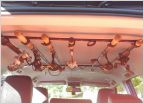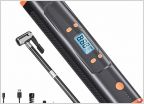-
Welcome to 4Runners.com!
You are currently viewing as a guest! To get full-access, you need to register for a FREE account.
As a registered member, you’ll be able to:- Participate in all 4Runner discussion topics
- Transfer over your build thread from a different forum to this one
- Communicate privately with other 4Runner owners from around the world
- Post your own photos in our Members Gallery
- Access all special features of the site
Install of the CSF All-Aluminum High-Performance Radiator
Discussion in '5th Gen 4Runners (2010-2024)' started by Cowboy59, Dec 28, 2021.


 Aftermarket LED 3rd Brake Light Comparison
Aftermarket LED 3rd Brake Light Comparison Roof mount cargo bag recommendations
Roof mount cargo bag recommendations What are the best mods for a 5th gen?
What are the best mods for a 5th gen? My 1st Oil Change
My 1st Oil Change Air Bag Rear Spring
Air Bag Rear Spring
